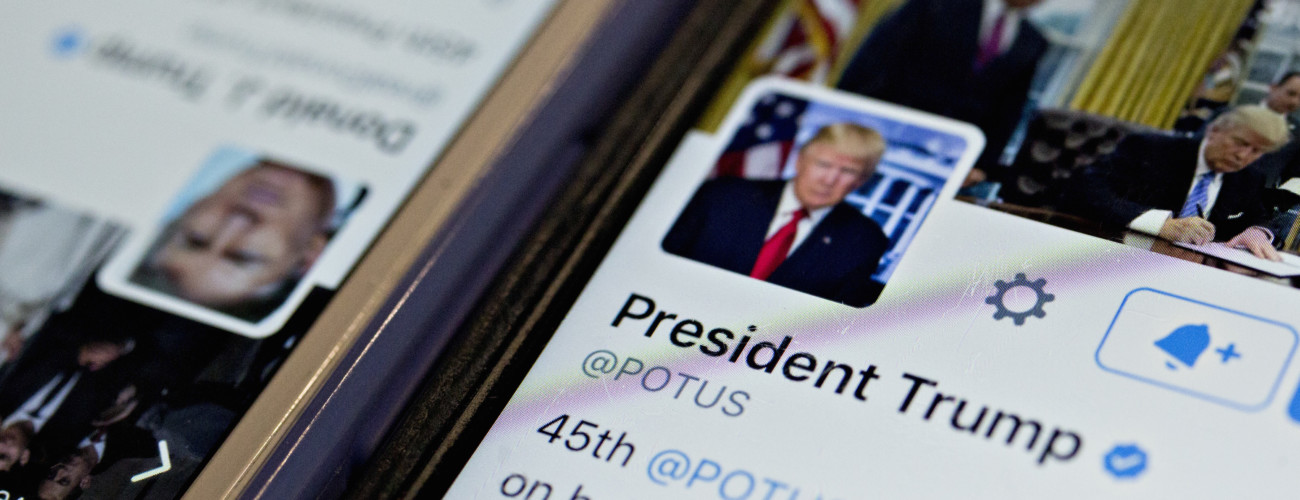Sign up for The Media Today, CJR’s daily newsletter.
It’s worth looking again at Twitter’s explanation for closing Donald Trump’s account. “After close review of recent Tweets from the @realDonaldTrump account,” the company said in a statement on January 8, “and the context around them—specifically how they are being received and interpreted on and off Twitter—we have permanently suspended the account due to the risk of further incitement of violence.” (The emphasis is mine.)
As journalists, many of us focused on the headline—Twitter bans Trump. We failed to understand that our obsession with those same tweets, or “how they are being received and interpreted,” has been part of the problem all along. We have amplified and broadcast each one, over and over. Not least on CNN.
The network has had internal discussions on limiting the use of Trump tweets. But it was felt that since the messages had been so widely distributed elsewhere, there was no point in holding back.
Until now, there was scant research to quantify what that meant. But First Draft, an organization dedicated to preventing disinformation, conducted a study on the platform cable news provided for Trump. They did that by measuring exactly how long tweets from “@realDonaldTrump” appeared on screen for each of the cable networks between January 1, 2020 and January 19, 2021, or just over a year. The results explain why, reportedly, Trump enjoyed the way he could tweet something and make the media dance to his tune by airing it minutes later.
The total airtime for his tweets was 1,924 minutes, or 32 hours of screen time. MSNBC accounted for 710 minutes, or nearly twelve hours. CNN came in second with 632 minutes, or ten-and-a-half hours. And Fox contented itself with a mere 582 minutes, or just under ten hours.
This included, of course, the self-serving tweets casting doubt on his landslide election loss. Before the election, the three networks aired Trump tweets predicting a fraudulent election for 101 minutes. After the election, a shorter time period in the study, that number rose to 158 minutes. And after he was kicked off Twitter, they resorted to wistfully airing his old tweets, like scrolling through text messages from your ex.
None of this would be possible without a destructive broader trend. On CNN, as nearly everywhere else, opinion has become news. What a politician or pundit says is presented as equivalent to actual events that have occurred. The news becomes a rolling argument, not an account of what happened that day.
During a Senate hearing about security breaches at the Capitol on January 6, Sen. Ron Johnson painted a picture that was distinctly at odds with the documented events of the day, and the details of the investigations that have emerged. In Johnson’s account, the pro-Trump crowd was largely frail — families with small children, the elderly, the overweight. This innocent bunch had been cruelly infiltrated by provocateurs, perhaps anti-Trump, who planned the whole thing, Johnson lamented.
It was a glimpse into a parallel universe. But CNN focused relentlessly on that one divisive clip, partly because it had been trending on social media. Outrage sells. They ignored key security failures of the day, the actual purpose of the hearing. Procedures don’t sell.
And this week, when Trump himself re-emerged at the Conservative Political Action Conference to repeat his tired lines, CNN aired clips of him calling the election rigged. They continued to air those clips for at least a day afterward, as well as featuring John Bolton, Trump’s former National Security Advisor and a long-term right-wing zealot, who argued that conspiracy theories are not driving his party.
These choices have consequences. My hope is that CNN will take the chance that Trump’s defeat has presented to focus much more on what people do than on what they say. And to ignore blatant lies rather than impanel some talking heads to discuss them endlessly.
In a hearing on February 24 titled “Fanning the Flames: Disinformation and Extremism in the Media,” Emily Bell, Director of the Tow Center for Digital Media at Columbia University, explained that in our unregulated media environment, “the opportunity for bad actors to manipulate the capabilities of digital media outstrip the capacity of those good faith actors to correct it.” As she explained it, a news ecosystem fueled by financial incentives and driven by algorithms only makes things worse. The marketplace doesn’t correct itself.
Rep. Debbie Dingell added that “media outlets are incentivized to report provocative, reactionary stories,” and that has the effect of normalizing such behavior.
The First Draft study of the airing of Trump’s tweets put the same dilemma a different way. The missives he fired off “provided a news ‘peg’ that ensured the conversation continued.”
But, it asked, could a network like CNN devote the same time to reporting on the very real issues of the last election—the mechanics of mail-in voting, and election security?
The answer is yes. It could have. And it could still change for the better.
Has America ever needed a media defender more than now? Help us by joining CJR today.



